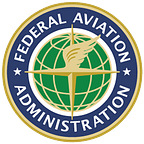A Safe Place for Safety
By Tom Hoffmann, FAA Safety Briefing Magazine
One of the key benefits of the Compliance Program as part of a risk management strategy, and as noted in FAA Order 8000.373C, is its ability to “foster an open and transparent exchange of comprehensive safety data between the FAA and aerospace communities.” We see this take place in several different formats, most notably via the Aviation Safety Reporting System (ASRS) or “NASA report,” where airmen are encouraged to report safety issues that they observe or are involved with, in a non-punitive environment. With ASRS, the FAA gets to collect helpful deidentified data on the occurrence, while airmen glean the benefit of learning from others’ mistakes. Consider subscribing to the ASRS Callback newsletter (asrs.arc.nasa.gov), which puts an interesting educational twist on submissions.
Another similar, but much less formal vehicle is the FAA’s General Aviation Safety Facebook group. We regularly promote it in this magazine’s Flight Forum department where we discuss reader feedback and comments. The group was started in 2018 and has grown to more than 16,000 active members.
As noted in the GA Safety Facebook group’s description, its goal is to:
… reduce the nation’s GA accident rate by building a community on Facebook where safety principles and practices can be shared through positive public engagement between the FAA Safety Team (FAASTeam) and GA community. This is a safe place to talk about aviation safety. … All members are encouraged to join in on the discussions and post relevant GA content that makes the National Airspace System (NAS) safer.
Those who wish to participate in this group must answer a few questions to assess their interest in GA and abide by the group’s rules. I should point out that number one on that list of rules is a reference to the Compliance Program, which explains that the FAA will not use safety discussions posted to the group for any enforcement action. This is designed to support an open and transparent exchange of information with mutual cooperation and trust between the FAA and you.
We believe this policy contributes to us seeing regular examples of pilots sharing lessons learned within the posts. One that stands out occurred last May when a contributor to the Facebook group relayed a harrowing and sobering experience during a $100 hamburger flight with his kids. After a change in winds prompted a go-around at his destination, the pilot admitted that he had forgotten to retract the flaps and was perilously close to the ground before he realized his mistake. Contributing to this lack of climb performance was the high-density altitude environment where he was operating.
Thankfully, with flaps now retracted and airspeed increasing, the aircraft climbed to safety and the pilot and his family returned home without a scratch. In a moving video recapping the event, the pilot reflects on what he believes went wrong: being complacent and being unfamiliar with go-arounds in an airplane he wasn’t used to flying. He admitted that practicing or at least briefing a go-around procedure before landing would have helped him zero in on the flaps. He advocated for others to learn from his error.
In usual fashion, the Facebook group rallied around this contributor with support and gratitude for sharing his mistake. Some even provided examples of similar mistakes they had made. You don’t have to search for long on the group before seeing various other scenarios and mea culpas from pilots eager to have their fellow aviators learn from and avoid.
Incidentally, the group is also a good place to get the scoop on industry updates and events, GA news, FAA educational resources, and maybe even do some virtual hangar flying with a few like-minded aviators.
If you haven’t already, consider having a look at this Facebook group along with some of the other voluntary reporting programs out there. Who knows? Your story may very well inspire someone else or even save their life.
